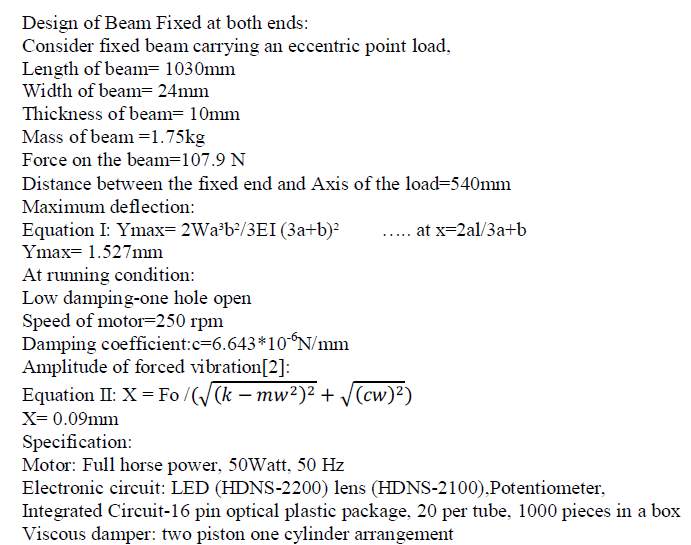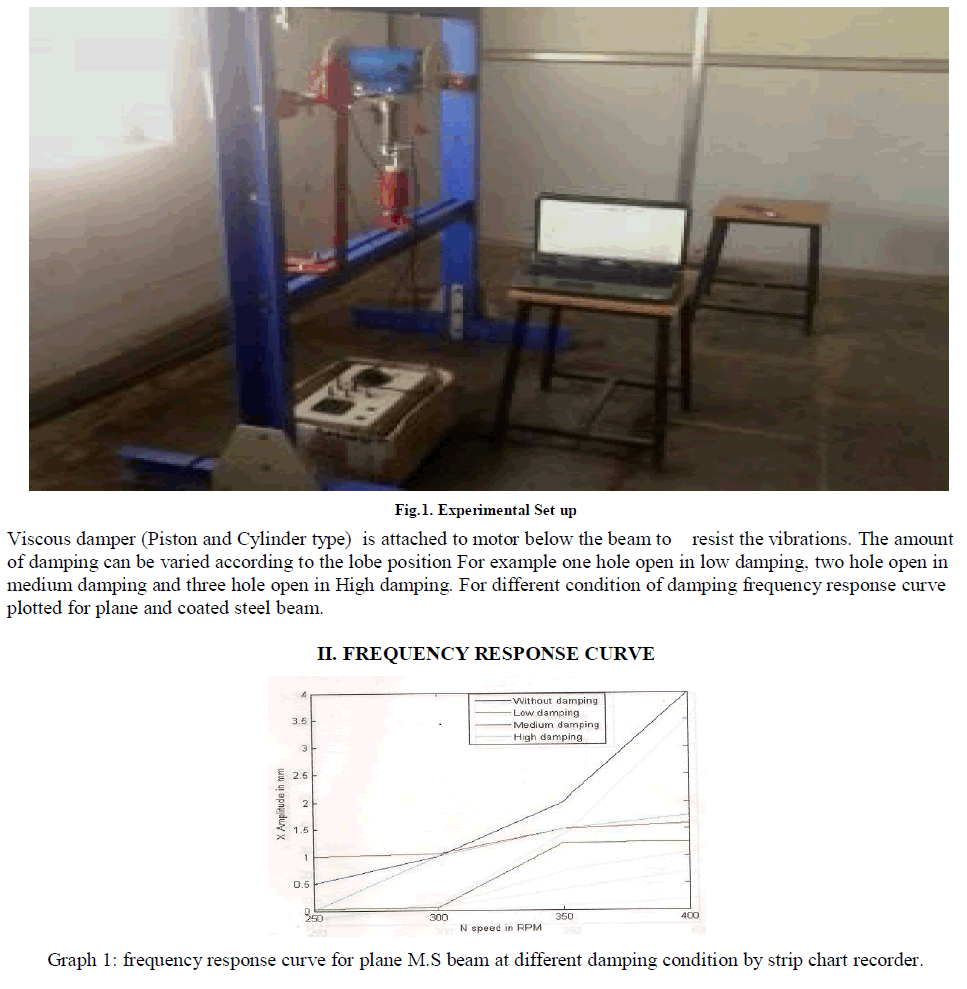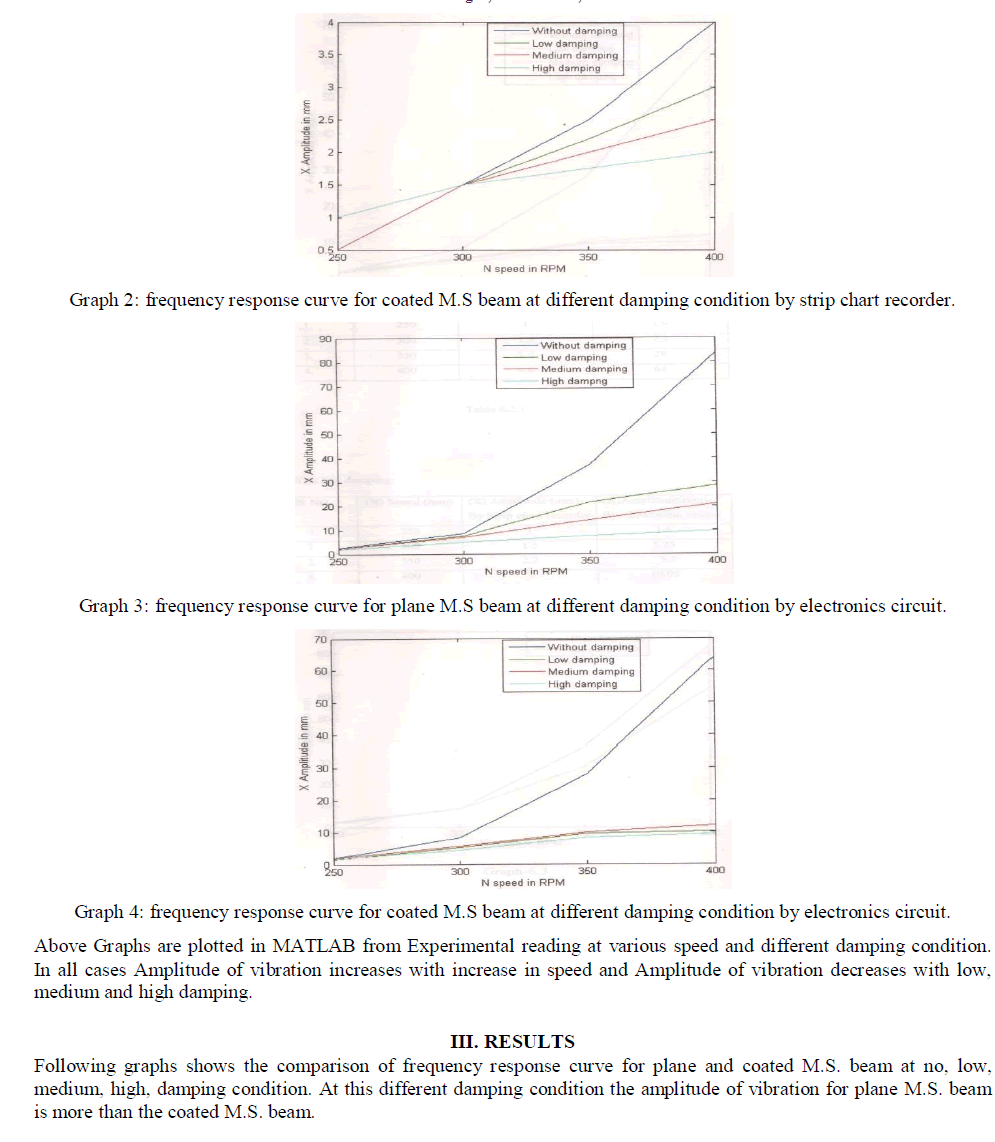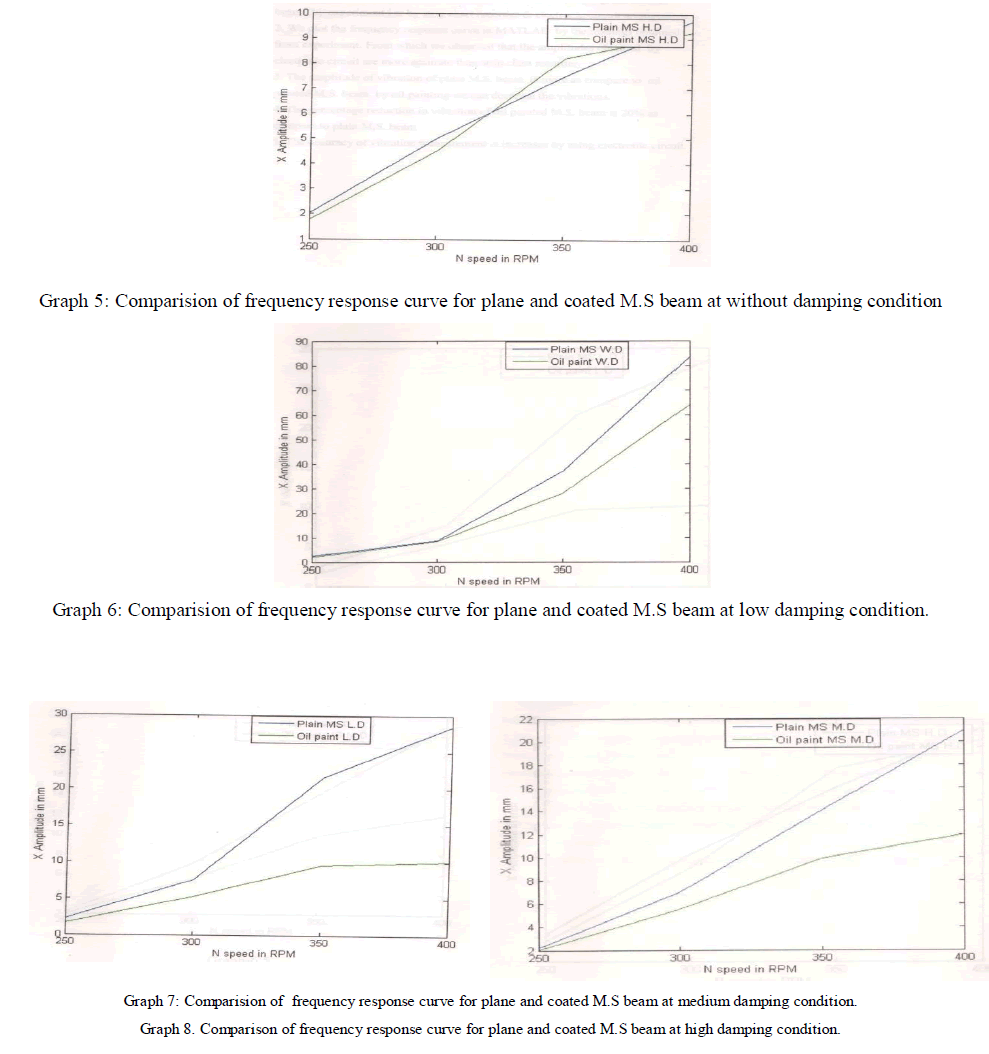ISSN ONLINE(2319-8753)PRINT(2347-6710)
ISSN ONLINE(2319-8753)PRINT(2347-6710)
Miss. Kachare Savita , Miss. Mhaske Priyanka , Miss. Phate Jyoti
|
| Related article at Pubmed, Scholar Google |
Visit for more related articles at International Journal of Innovative Research in Science, Engineering and Technology
Vibration problem occurs where there are rotating or moving parts in machinery, apart from the machinery itself surrounding structure also faces vibration hazards because of this vibrating machinery. The undesirable vibration creates excessive stress in machine element undesirable noise looseness is a part partial complete failure of parts and also affects a human comfort. Hence, reductions of undesirable vibration are essential in machinery[1]. In this paper vibration of fixed beam analyzed and measured at different damping condition and at various speed by strip chart recorder and electronic circuit .frequency response curve are obtained from experimental result and analyze for reduction in vibration .The paper investigate the nature of beam vibration at various condition for plain and coated mild steel beam material
Keywords |
| Forced damped vibration, Frequency response curve, Beam, Amplitude etc |
INTRODUCTION |
| When external forces act on a vibrating system during its motion, it is termed Forced Vibration. Under this condition, the system will tend to vibrate at its own natural frequency superimposed upon the frequency of the exciting force. After a short time, the system will vibrate at the frequency of the exciting force only, regardless of the initial conditions natural frequency of the system. The latter case is termed steady state vibration. In fact, most of vibration phenomena present in life are categorized under forced vibration. When the excitation frequency is very close to the natural frequency of the system, vibration amplitude will be very large and damping will be necessary to maintain the amplitude at a certain level. The latter case is called “resonance" and it is very dangerous upon mechanical and structural parts. Thus, care must be taken when designing a mechanical system by selecting proper natural frequency that is sufficiently spaced from the exciting frequency[3]. Aanalysis of beam vibration now a day is very important as beam is being widely used in various applications. These beams are continuously subjected to various types of loading. If these vibrations exceed beyond certain Limits there will be danger of beam breakage or failure[4]. So it is necessary to study the vibrations which are set up or build up in the beam and try to reduce them. The analysis of moving loads on a beam structure has been a topic of interest for well over a century[5]. Interest in these problem originated in civil engineering also for the design of railroads, bridges and highways structures. The problem arises from the observations that as a beam structure is subjected to moving loads, the dynamic deflections, as well as stresses are significantly higher than those for static loads. Most of the previous analysis work in this area was directed at the dynamic behaviour of simple structure, such as simply supported beam, subjected to a simple loading, e.g. a concentrated load. The main causes of vibration are unbalanced forces in the machine, dry friction between the two mating surfaces, external excitations may be periodic, random, or the nature of an impact produced external to the vibratory system . In spite of harmful effects, the vibration phenomenon does have some uses also, e.g. in musical instruments, vibrating screens, shakers, stress relieving, shock absorbers etc[2]. |
THEORETICAL ANALYSIS |
 |
EXPERIMENTAL METHODOLOGY |
| The aim is to find frequency response curve for transverse vibration of fixed supported plane and coated beam under different damping condition and at various speed. A motor is used to create vibration on beam. The Electronic circuit and pen holder arrangement is attached to beam at same point to obtain a graph on strip chart recorder and on computer screen. |
 |
 |
 |
CONCLUSION |
| Analysis for the reduction in vibration made from frequency response curves which are obtained from the observations.. From graphs the amplitude of vibration of plane M.S. beam is more as compare to coated M.S. beam. . In practical circumstances, the amplitude may be very large but doesn't become infinite due to small amount of damping that is always present in any system.The reduction in vibration of coated beam is 20% than that of plane M.S.beam.Thus coating of material to reduce vibrations are available at a stage where no changes in design are possible, anticipation in the original planning and designs can make possible the avoidance of vibration problems at a little cost. By measurement of amplitude using electronics circuit accuracy of measurement is increased. It also eliminates the measurement error in mechanical strip chart recorder. |
Nomenclature: |
| X= Amplitude of forced vibration, mm |
| F0= Magnitude of external exciting harmonic force ,N |
| Ymax= Deflection of Beam in mm |
| E= Modulus of elasticity for beam |
| w= Frequency of external exciting force, rad/sec |
| C=Damping coefficient, N/mm |
| m = mass of beam |
| W= load in N |
| áýàn= Natural Frequency |
| M.S.=mild steel |
References |
|